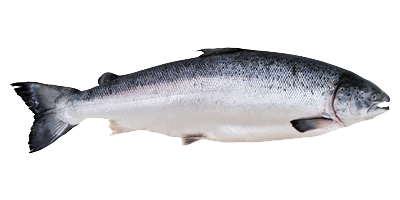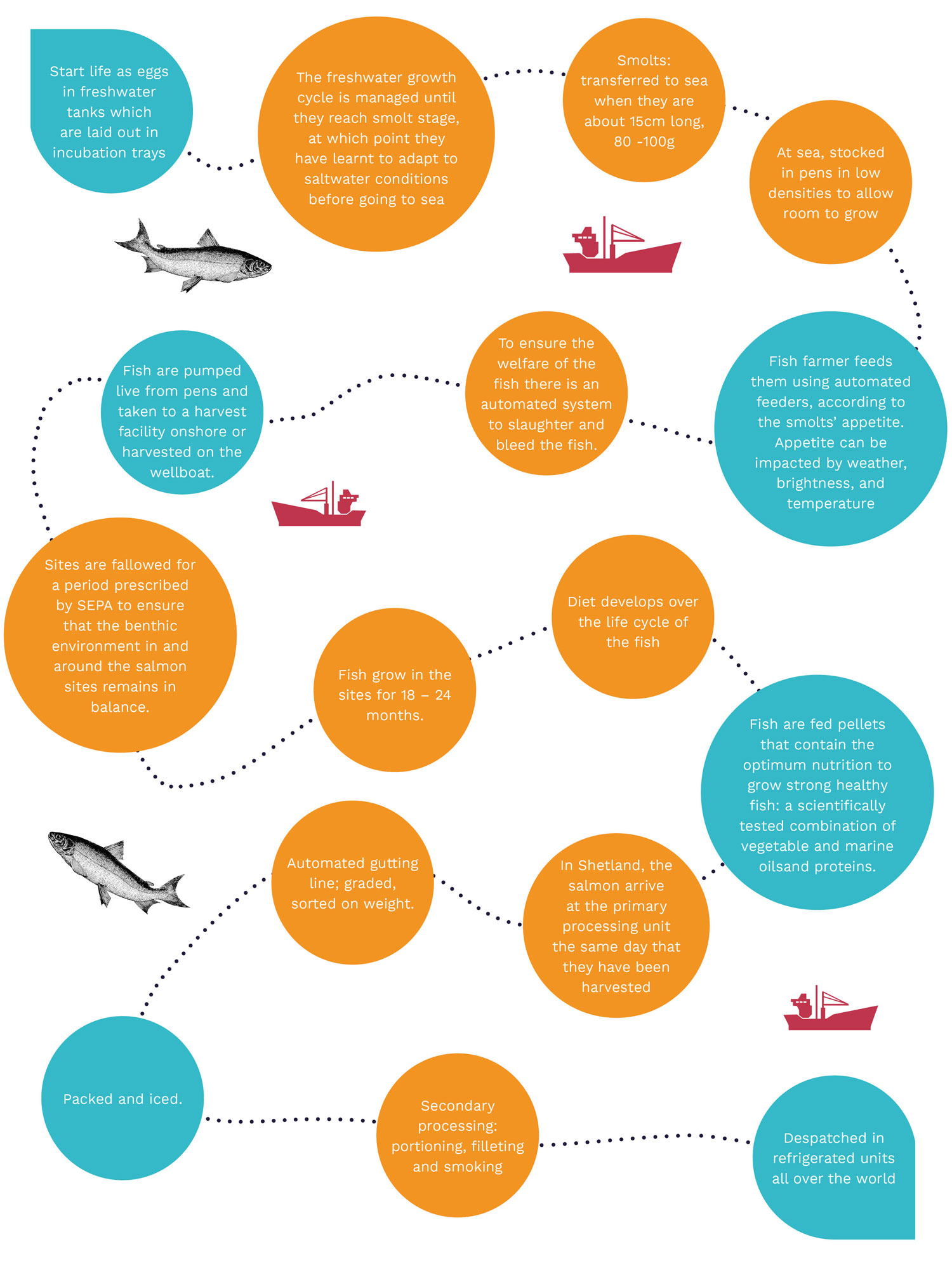Salmon
Shetland is located in one of the best parts of the world for producing superior quality fish, where fast and strong tidal currents create the perfect conditions for farming salmon.
Shetland salmon is sold all year round to markets throughout the UK, Europe, and the United States, either chilled or frozen whole, in steaks or fillets. Most fish is sold to suppliers in the retail sector or onto secondary processors, who appreciate the quality of the raw fish as a basis for further added value processing.
Shetland’s salmon farming industry has grown rapidly since it started in the 1980s and it is now truly one of Shetland’s greatest national global success stories. In less than 40 years, the industry has become the cornerstone of the Shetland seafood industry worth a staggering £137 million a year supporting around 400 jobs.
However, in order for salmon farming to compete in a global market in terms of scale and price – it has to be extremely efficient and innovative in its approach.
Today, there are fewer companies in Shetland but they operate larger sites in the more tidal offshore areas with larger pens, sophisticated equipment and automated feeding systems. Cooperation between companies operating in the same area is crucial to maintaining biological controls.
It is safe to say salmon farming has now come out of its entrepreneurial, high growth stage and become a more mature, controlled and sustainable industry.
Salmon
- Shetland’s salmon sites are perfectly located for producing strong, healthy fish – located between the powerful currents created by the North Atlantic and the North Sea
- It typically takes around 24 months from egg to harvest
- The farmed salmon production cycle mirrors nature. In the hatcheries the salmon go through their natural physiological transformation to prepare themselves for sea, just as they would in the wild. This includes a dramatic growth rate and increase in feeding.


DID YOU KNOW?
Once the eggs have hatched, the baby salmon, or alevins, eat from their own yolk sac, which contains all the nutrients they need for feeding.
From sea to plate: farmed salmon

